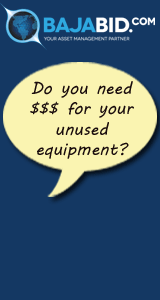Directional Control Valves
Directional control valves also called discrete valves as its less-inform term as the valves shift from one discrete position to another. Propotional valves, on the other hand, control direction and speed. In addition to shifting into discrete positions, they can shift into intermediate positions to control actuator direction, speed, acceleration and deceleration. intermediate positions to control actuator direction, speed, acceleration and deceleration.
The more basic version of valve compared to discrete directional-control valve is binary valve. Binary valves operates either on or off. Whereas discrete valves generally use a spool to achieve two, three, or more positions, discrete valves use a plunger, poppet, or ball that seals against a seat. This allows a positive seal to prevent cross-port leakage.
Simplest directional control valve is a check valve. Check valves allow fluid to flow in one direction and not in opposite direction.
Directional control valves are used for many purposes:
- Used to isolate a certain branch of circuit
- Vent the relief valve by either mechanical or electrical control.
- Can allow free flow from the pump to the reservoir at low pressure during the time in which the delivery of the pump is not needed in the system.
- Can start, stop, accelerate, decelerate and change the direction of motion of a hydraulic actuator.
- Control the flow or direction of the fluid in any hydraulic system
Directional Control Valve are available through Quick Time Engineering Inc.
Directional Spool Valve
Directional Spool Valves comprises a moving spool situated in the valve housing. When an actuating force moves the control spool, the annular channels in the housing are connected or separated. Directional spool valves have several unique features, such as high switching power, low actuating force and a wide variety of control functions.
Direct spool valves may be direct-operated or pilot-operated. A direct-operated spool valve is either electrically controlled with solenoids, mechanically (e.g. manually) controlled with lever or buttons, or controlled with hydraulic or pneumatics. Whether directional spool valve is direct- or pilot-operated depends on the actuating force needed to move the spool. Thus, this is dependent on the flow, i.e. nominal size of the directional spool valve.
Directional spool valves have two type, sliding spool valve and rotary spool valve. Sliding spool valve are cylindrical in cross -section and its lands and grooves are cylindrical too. In spool valve, the spool is grooved and slides in and out of position withing sleeve, alternately blocking and opening the fluid intake and outtake portals. These valves are widely used in fluid power systems such as pneumatic and hydraulic to control the flow direction and flow control.
Rotary spool valves have spheres like lands and grooves, in the form of holes. A rotary spool valve consists of fixed tubular sleeve, within which is rotating X shaped piece called the core. The function of this valve is similar to a revolving door, with each bend of the core functioning as a portal for hydraulic fluid to leave and enter the valve.
The directional spool valve is widely used in hydraulics where oil is the energy source and they are also used in pneumatics where air is the energy source. Directional spool valve does the flow direction of the energy source by combining or switching the paths through which the oil and gas can travel. A directional spool valve is a cylinder inside a sealed outer case and there are several chambers drilled through the case from one side to the other and these are called ports.
The major function of the spool is to move withing the sealed case and does the opening and closing of these ports depending on the position of the spool. The moving of spool can be done in many different ways, either manually or by other energy sources. Directional spool valves can be operated in many ways like by using a button, lever, or by a solenoid. Most directional spool valves are referred by 3/2 or 5/3 where the first number represents the number of ports and the second one represents the spool position.
Directional spool valves have many types of configurations, some have more ports and are able to control multiple items of equipment at once. The blocking part of the spool is known as lands. Direction spool valves contains many advantages and disadvantages.
Advantages of the spool valve:
- Spool valves can be used as selector valves, that has the ability to select from high and low pressures or vacuum and pressures
- It can be used with vacuum
- It can be used to lock a pressure downstream.
- These valves are balanced, the movement of the spool is not affected by the pressure entering the valve from any given port
- They can be actuated with less force because they are not affected by pressure
- The major advantage of the spool valve is that the fluid entering the valve from any working port does not affect spool movement.
Disadvantages of spool valve:
- Open crossover, all the ports are momentarily opened to flow as the spool shifts during actuation
- Lower flow rate, because of the smaller internal surface area.
- Seals mounted on the pools are exposed to wear when traveling through the bore of the valve, and this would affect the product life.
- Most of the spool valves are designed with metal-to-metal sliding fits and because of this, fluids may bypass these seals.
DIrectional Spool Valve are available through Quick Time Engineering Inc.
Directional Poppet Valve
Directional poppet valves are similar to pilot-to-close check valves. The cutaway view in the figure below shows the construction of a hydraulic 2-way, normally closed, directional poppet valve. Fluid at the inlet port passes through the control orifice to the backside of the poppet. The tip of the spring-loaded armature closes off the outflow orifice to trap fluid behind the poppet. As the symbol shows, the valve is a check valve that stops flow from inlet to outlet in the normal condition. This design will not stop flow from outlet to inlet, although flow in this direction may be at a reduced rate. If using this valve for reverse free-flow in its normally closed condition, make sure to choose one with free-flow capability.
Energizing the solenoid coil creates a magnetic field that raises the armature to open the outflow orifice. This orifice is larger than the control orifice, so the greater flow through it causes a pressure drop behind the poppet. Now, inlet pressure pushing on the poppet’s annulus area outside the seat diameter unseats it to allow fluid flow to the outlet. De-energizing the solenoid coil lets spring force reseat the armature tip to again trap fluid behind the poppet and close it.
Unlike spool valves whose lands overlap, poppet valves open a flow path to outlet immediately. This means response time of whatever the valve controls is very fast. Also, when a spool valve shifts open it goes to the end of its stroke regardless of the amount of flow. On the other hand, a poppet only opens as much as the flow going through it needs. This means the poppet has less distance to move to stop flow, so again its response is faster.
Directional Poppet Valve are available through Quick Time Engineering Inc.
Hydraulic Check Valve
Hydraulic Check Valve are the simplest form of hydraulic devices in that they permit free oil flow in one direction and block oil flow in the opposite direction. They are also known as non-return valves. It may be used as a directional or pressure control in a hydraulic system.
Most check valves are spring-loaded and use a bill or plate to seal the flow in one direction. Check valves are designed with seats and thus are able to isolate circuits with no leakage.
Hydraulic Check Valve are available through Quick Time Engineering Inc.
Quick Time Engineering Inc is an international company with offices and distribution networks in the USA, Hong Kong, Europe and Malaysia.
In its 20 years of operation since 1998, Quick Time Engineering Inc had emerged from a local engineering company with a single staff that provided solutions in factory automation to become nowadays a company that serves the Oil & Gas industries, EPC contractors, System Integrators and other industrial automation and process control companies worldwide. Customers from over 50 countries worldwide trust us with their need for process control instruments and industrial automation products.
For more information about Quick Time Engineering Inc , visit www.quicktimeonline.com or email enquiry@quicktimeonline.com




.gif)

